- Scolopendra
- Varieties of Scolopendra
- Centipede and Scolopendra
- Scolopendra breeding
- Scooters
Nature is amazingly diverse. A huge number of bizarre, beautiful or terrible-looking animals and insects lives on our planet. The ecosystem needs them to maintain a certain balance in nature. Millipedes play their own role. They belong to the genus of the leg-footed, the order of scolopendra. Scolopendra is a predatory, poisonous insect that is not afraid of people, but prefers not to meet them of their own free will. They may have different sizes.
Habitat
Scolopendra can see the description and photo on the site. It is advisable to do this for those people who are going on trips to warm or tropical countries. It is there that the millipede and tropical scolopendra grow to gigantic proportions and present a real danger to humans. The length of their body reaches 26-30 cm. There are individuals up to 45-50 cm. Therefore, the question of where the scolopendras live is interesting for humans. They can be found on the islands of Jamaica, Trinidad, in the north and west of South America.
On a note!
These millipedes are common in the tropics and subtropics, as they are thermophilic. There are about 600 species of scolopendras and only a few species are found in southern Europe, the Mediterranean, Transcaucasia, Central and South Asia, and the Far East.
Basically, real scolopendras are found in the upper layers of the soil, under stones, lying logs, in crevices of rocks and in other secluded corners, where humidity is preserved during the hot time of the day and nobody can disturb them. The natural question arises as to whether the poisonous millipede can be found in places with a colder climate, and if so, where does this predatory insect live in Russia. There are different types of insects, some of which live on the territory of the Russian Federation.
Species of predators
Typical representatives of this order of millipedes are the ringed scolopendra, California and scolopendra Lucas. But there are other varieties of these predators that are their closest relatives.
- Californian. It has a green color and belongs to the giants, as the size of its body reaches 20 centimeters. It lives in the arid regions of Mexico and the USA. It is possible to verify whether scolopendra is dangerous for humans in the usual state by observing a predator in wildlife. In a calm environment, the centipede does not pose any threat, but in case of danger, running numerous legs over the skin of a person causes inflammation at the site of contact. Only one death of a seven-year-old child in the Philippines from the bite of this poisonous scolopendra has been recorded for all time.
- Ringed millipede. It is found in the Mediterranean countries, Southern Europe, North Africa, in the southern region of Russia. It is widespread in the Crimea. The body length is from 14 to 17 centimeters. Scolopendra is painted in a beautiful golden yellow color, but is also poisonous, like its relatives.
- Vietnamese. This representative is distinguished by the release of a luminous liquid, smelling of phosphorus, which strongly burns the skin and causes inflammation. The insect bite Scolopendra subspinipes forms a wound up to 1.5 cm in diameter and 5 mm deep.The toxin is similar in action to the poison of a viper. The wound bleeds for a long time, since a special substance is injected together with the poison, which prevents blood clotting. There is an increase in temperature to 39-40 degrees and an increase in a bitten limb several times. An injured person must urgently be given an antiallergic drug and taken to the nearest hospital.
- African scolopendra. She can make hind legs in the form of chirping and popping to scare away enemies. Individuals themselves do not react to this sound in any way.
- Blind venomous scolopendras cryptops (Cryptops) live in the upper layers of the soil. They, like moles, practically do not appear on the surface. These small yellow-brown scolopendras 3-4 cm long can be found in the steppe regions and garden plots even in Moscow latitudes. They are not dangerous, since a weak jaw apparatus cannot bite through human skin. In the region of the tropics, there are various species of these insects, which are painted in different colors, ranging from green to purple shades.
- Drupe (Lithobiomorpha) are small relatives of scolopendras. They may accidentally get into the stomach with fruit or crawl into a sleeping person’s nose, ear, but this happens very rarely. Mostly found in cities near damp foundations.
- The scutiger flycatcher (Scutigera coleoptrata) has 15 pairs of long legs and long antennae. Scolopendra is an insect at night, but this species can be seen during the day on the wall of the house. Hunts for flies and other small insects. It tolerates dry air better than all types, although in the hottest daytime it tries to hide in shelter. Scolopendra of this species is able to be active at lower temperatures, which provides it with advantages in hunting over other insects. Today it is rarely seen in Crimea. Black scolopendra also belongs to the class of scooter.
Appearance
You can see how scolopendra looks in colorful photos. It consists of a head and a long body, divided into 21 or 23 parts. Each segment has a pair of legs measuring 2.5 cm in light yellow color with a pointed spike at the end. Poisonous gland is in each leg.
The back pair of legs differs from all the others in large size and directivity back. This helps the millipede move well in the ground and hold in position while hunting.
The insect is often called the centipede and scolopendra. But how correct this is from a scientific point of view, it is difficult for an ignorant person to understand this issue. So what is the difference between a scolopendra and a centipede - based on the name that exists in the people, centipede has forty legs. But in reality, these insects have from 15 to 171 pairs of legs.
On a note!
Millipedes always have an odd number of pairs of legs, so centipedes do not occur in real life. Predators run very fast, they can even bounce, trying to hide from the enemy.
The millipede head is a plate with eyes, two antennae and front legs, which turned into the maxilla, consisting of 6 parts. The extreme segment is a sharp claw, bent inward and connected to the channel of the poisonous gland. A toxin is released through a hole in the claw, which paralyzes the victim. A completely natural question arises as to what is the danger of scolopendra. After a bite in a person, the poison causes severe pain, a swelling, numbness and inflammation appear at the bite point. The pain syndrome lasts from two hours to several days.
Reproduction and nutrition
Millipede is a predator and a good hunter. Therefore, it is clear what scolopendra eats. Like any predator, it eats small worms, larvae of beetles, flies, insects. Large individuals are able to attack small lizards, frogs, birds, mice, snakes and even bats.
Interesting!
Scolopendras are eaten for a long time, carefully digesting food and interrupting the meal several times during the whole process of absorption of food. A large prey for themselves can be fed for several days.
Scolopendra breeding occurs in the warm season. This period lasts from late spring to early summer. The male closes the entrance to his housing with a web and lays a sperm bag called a spermatophore on it. Then the female creeps over this sac, capturing it to fertilize the eggs. In the Crimea there are colonies of female scolopendrasthat breed without males parthenogenetically.
The female shows maternal instinct, guarding the laid eggs for several weeks, wrapping them around her legs. At this time, it releases substances that protect against the development of mold. After the appearance of young offspring, the female leaves. Scolopendras are born white and soft, then molt several times, darken and begin an independent life. Millipedes live for 1-2 years, large relatives can live up to 7 years, usually in captivity.
Scooters
In Russia, there are millipedes that do not pose such a threat as tropical representatives. The home scolopendra that lives in a human dwelling is practically harmless. It even benefits by eating flies, moths, cockroaches, bedbugs, ants. It reaches a length of 2-6 cm. A scolopendra bites only for self-defense. Its jaws are very weak and cannot bite through human skin. But if this does happen, then the predator’s bite is as painful as a bee’s.
Important!
In order to prevent infection from the legs of the millipede in the wound, the site of the bite must be treated with ammonia, a solution of manganese and drink an anti-allergic drug.
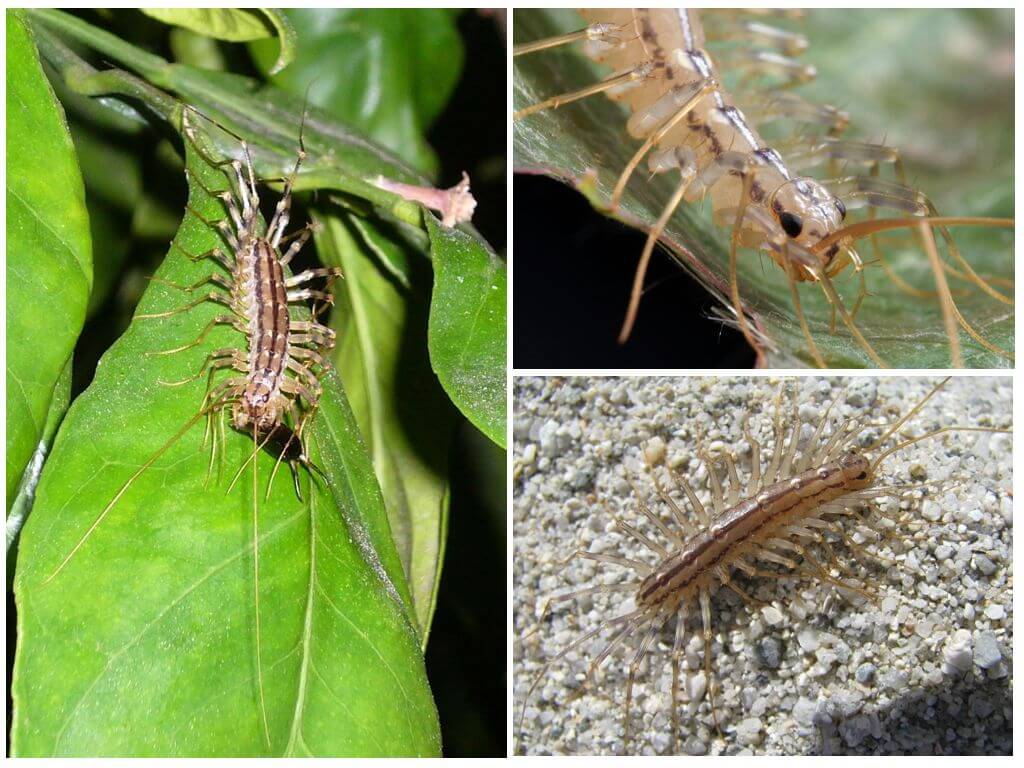
Ways to fight
Scolopendra home, a photo of which can be viewed on the site, inhabits moist, warm, dark rooms with a sufficient amount of food, a suitable temperature. Get rid of her mechanically, it is very difficult, since the flat shape of the body and the carapace reliably protect from external influences.
To combat domestic scolopendra, modern broad-spectrum insecticides are used, folk remedies such as boric acid, cayenne hot pepper and the help of professionals is used. But most importantly - you need to remove the reasons due to which millipedes appeared:
- get rid of mold and moisture in the house;
- close up all the cracks in the windows, doors and floors;
- clean up the living room;
- remove other insects.
Some exotic lovers want to have giant scolopendra at home. Those wishing to purchase such a pet need to know all the necessary information before venturing on such an act:
- how much is a scolopendra;
- in what conditions to contain it;
- what precautions to observe;
- than to feed.
Then the owner and the scolopendra will comfortably and safely coexist nearby.
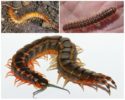
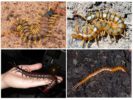
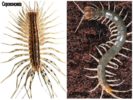
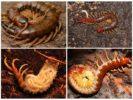
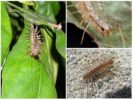
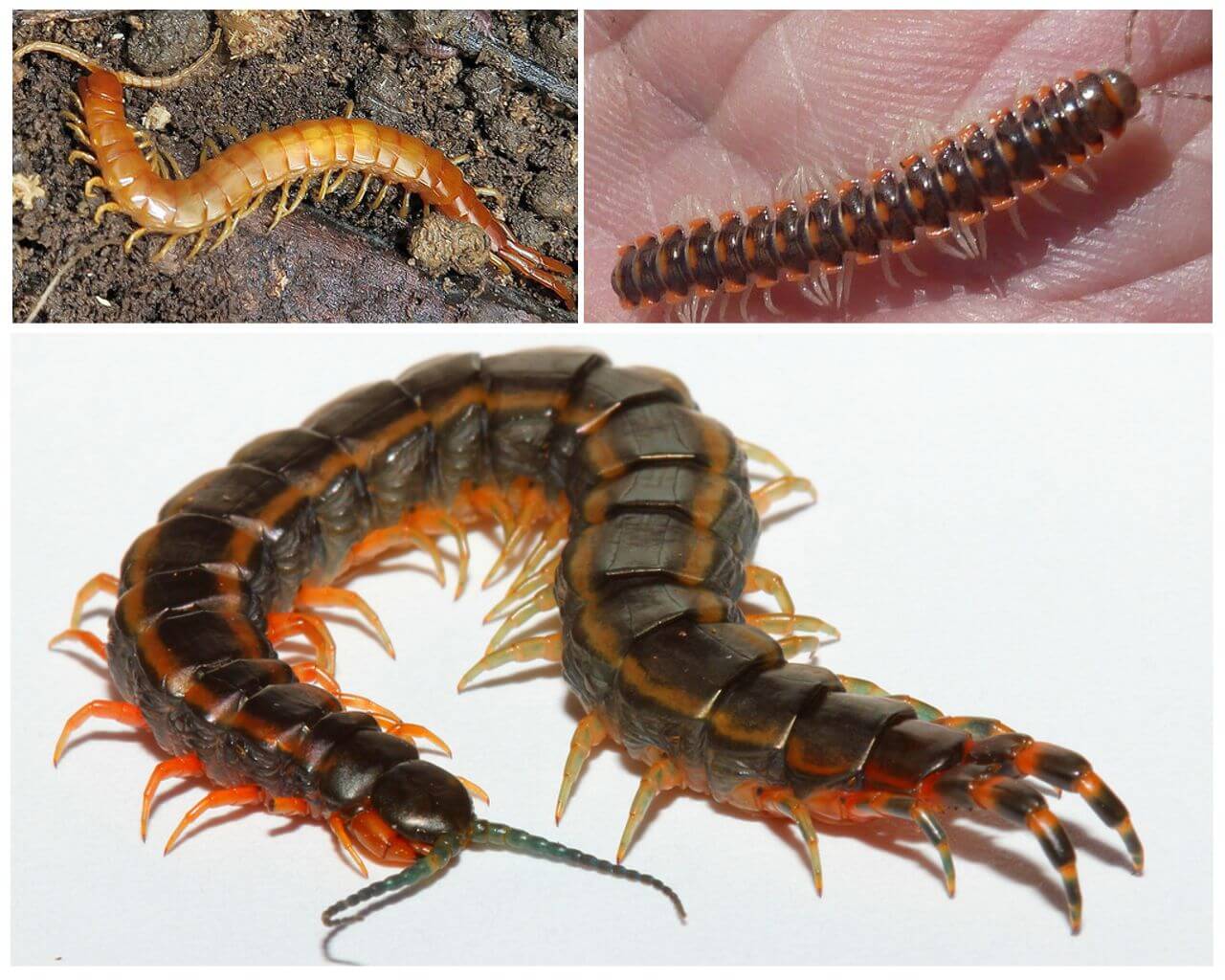
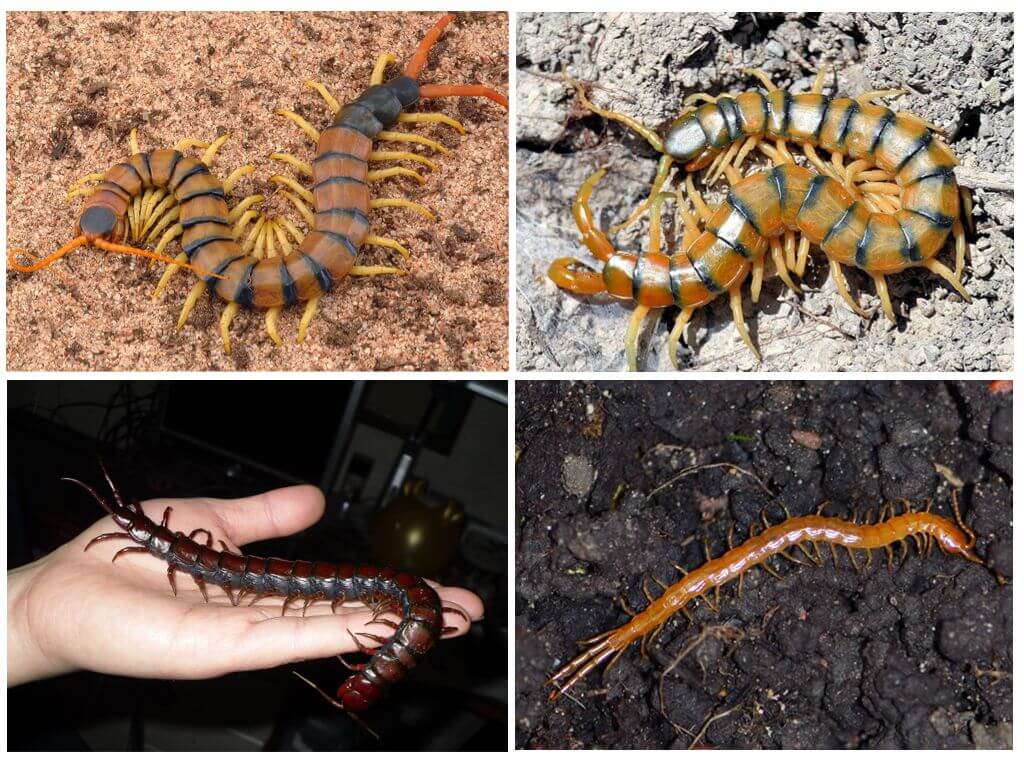
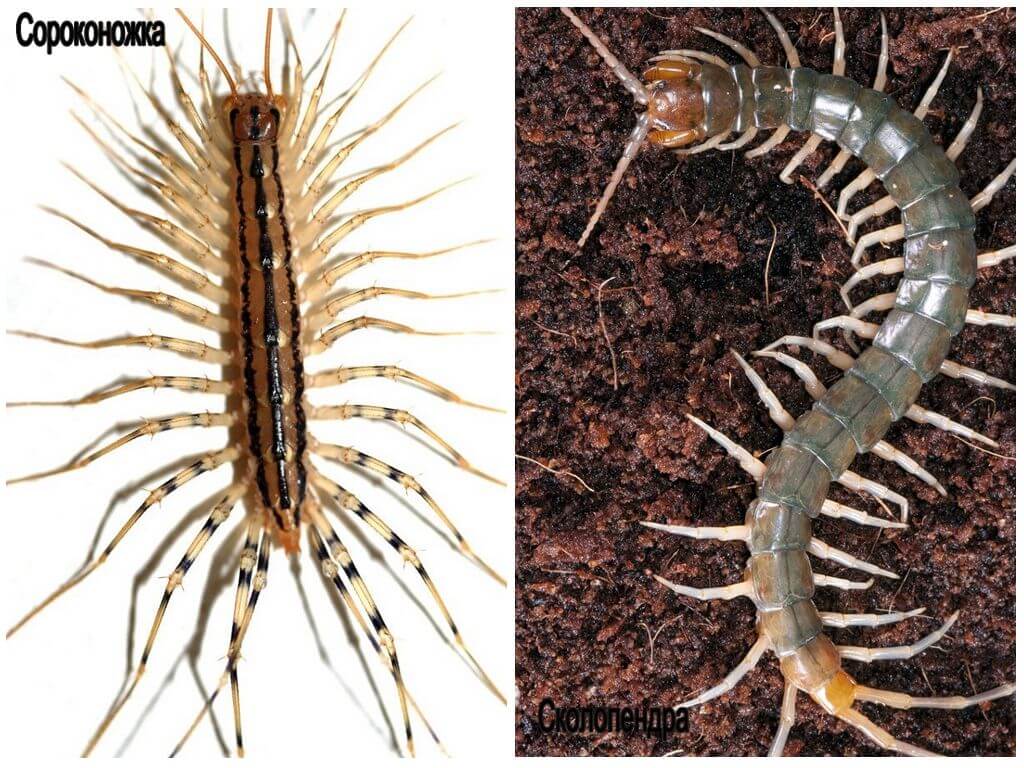





It’s good that these poisonous millipedes do not live with us. It's scary to look at them!
We write what is, but I have not met, which is very glad.
We went to the Crimea to relax in the summer. We were warned that these scolopendras could crawl into the tent. So we shook everything before bed so as not to have problems and carefully closed the tent. Rest passed without incident.
And we had a problem in the Crimea. My wife accidentally stepped on a millipede in the yard. The scream was not only from a bite, but also from fear. The pain was acute. At first they thought that they were a bee, but they saw a thin tailed creature. The owner said that there would be nothing wrong, washed the wound with potassium permanganate and gave a pill against allergies. For a couple of hours, the wife felt unwell: the temperature rose and her leg turned red, but then everything went away. So be careful in those parts
I saw these huge scolopendras in Mexico. The guide showed us when we were on an excursion.A terrible sight to say. Then they walked all the time and kept an eye on: was there still this muck somewhere underfoot.
In our house, these centipedes appeared. Oh and run fast. Although they say that they are not dangerous, it is unpleasant to see them periodically. I had to make balls of boric acid. Laid out under the sink and bath. They did not leave wet rags and wiped dry all the places where water could remain. Not immediately, but the insects disappeared. It worked.